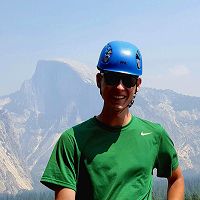Research Community
The Critical Zone Tree: the most instrumented tree in the Sierra Nevada.
In order to increase knowledge about Earth's critical zone and advance Earth systems models, we encourage field site and data use among the critical zone research community. Southern Sierra researchers also strive to rapidly communicate current research activities and findings through frequent presentations and publications.
Field Site and Data Access for Researchers
Interested in conducting research at our site or collaborating with our principal researchers? Our intensively studied field areas are resources for the critical zone research community. We welcome all projects using our sites and data, short-term or long-term, single-discipline or interdisciplinary. Common measurements are collected at Critical Zone Observatories across the U.S. to promote cross-CZO projects. Our core datasets are publicly available here. Background information on our field areas can be found in the Infrastructure section of our website. For more information about utilizing our field sites or collaborating with our team, please contact Field Manager Erin Stacy, PI Roger Bales, or one of our Co-Principal Investigators.
Publications
We have a growing collection of over 75 peer-reviewed articles and books detailing and synthesizing research from the Southern Sierra Critical Zone Observatory. These publications also include cross-CZO studies utilizing multiple Critical Zone Observatories to compare critical zone properties and processes across regions with varying climates, geologic settings, ecosystems, or anthropogenic impacts.
Scientific Conferences
Southern Sierra researchers have presented over 100 scientific conference posters and talks since 2007. Find us at national and regional meetings hosted by the American Geophysical Union, Ecological Society of America, Soil Science Society of America, European Geophysical Union, and International Society for Optics and Photonics. We also present at conferences focused on Sierra Nevada research, including the Yosemite Hydroclimate Conference and the Sequoia and Kings Canyon Science Symposium.
A snow manipulation experiment used black sand to accelerate snow melt, and white plastic sheets (in the background) to slow snow melt.
2013 attendees for the annual SSCZO team meeting, August 20-21, 2013, Fresno.
Several field trips this summer are introducing researchers to the SSCZO.
News

FEATURED
Southern Sierra CZO Videos
04 May 2020 - Onward California - University of California television spots showcase Southern Sierra CZO research
_200_200_80auto_s_c1.jpg)
Researcher Spotlight: Morgan Barnes
14 Nov 2018 - Say 'Hello!' to biogeochemist Morgan Barnes! Morgan specializes in the study of soil nutrient biogeochemistry, focusing on phosphorus in the Sierras

Congratulations Jill Marshall on receiving the 2018 Luna B. Leopold Young Scientist Award
06 Nov 2018 - Marshall Receives 2018 Luna B. Leopold Young Scientist Award
_200_200_80auto_s_c1.jpg)
Researcher Spotlight: Jeff Lauder
24 Oct 2018 - Meet forest ecologist Jeff Lauder! Lauder's research focuses on Sierra Nevada Conifers and how they have been responding to stress during drought!
Multiple postdoc and grad student opportunities at UC Merced
12 Sep 2018 - Two postdoctoral scholar positions and multiple MS or PhD research assistantships are currently available at the University of California, Merced....

Researcher Spotlight: Russell Callahan
11 Apr 2018 - Meet the people behind the research! Russell uses a combination of geophysics and regolith geochemistry to understand landscape evolution.
Explore Further
_900_469_80auto_900_392_80auto.jpg)
